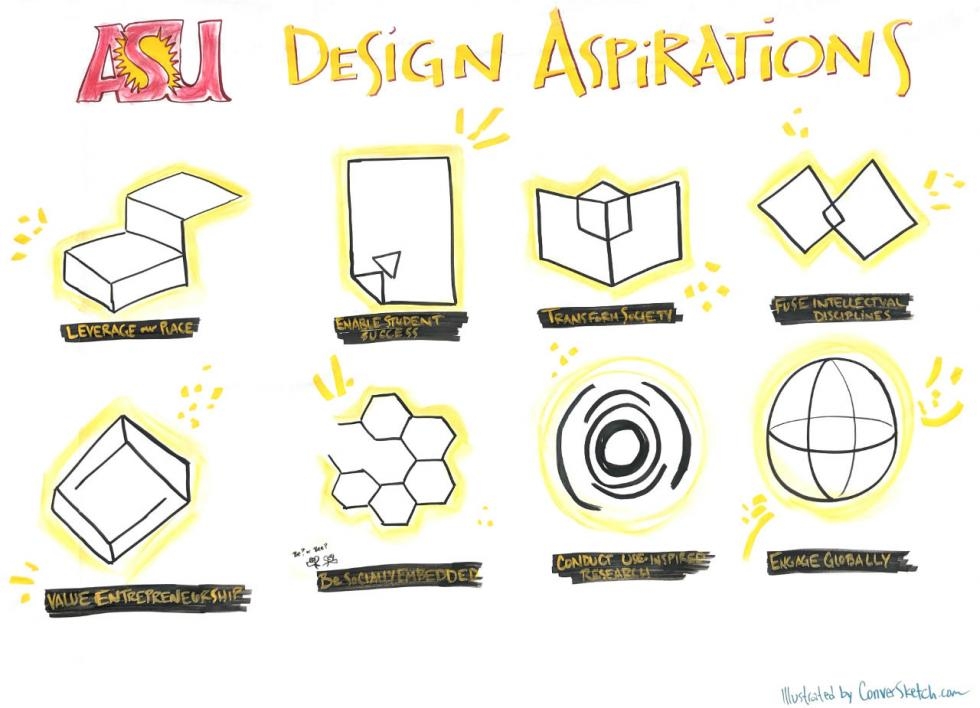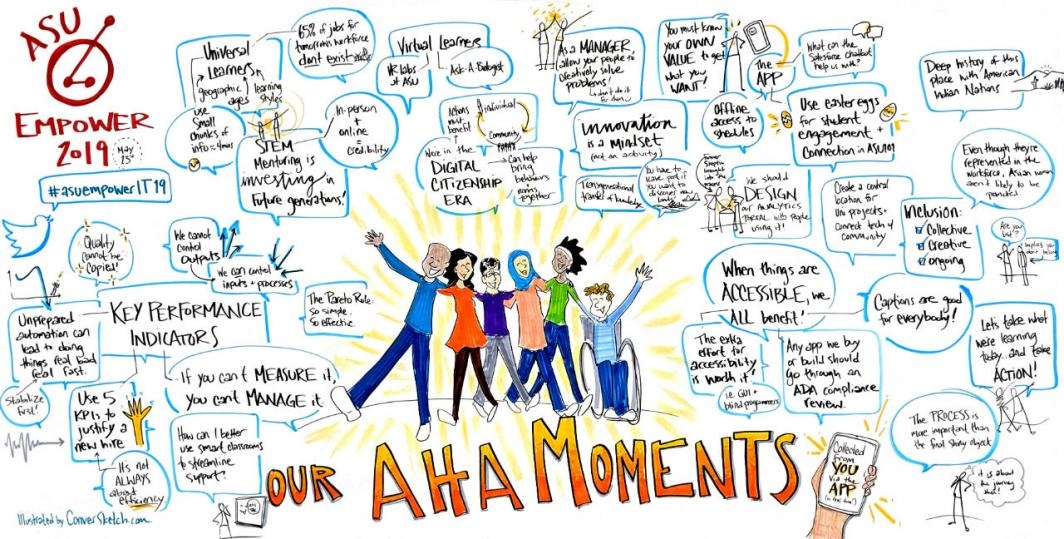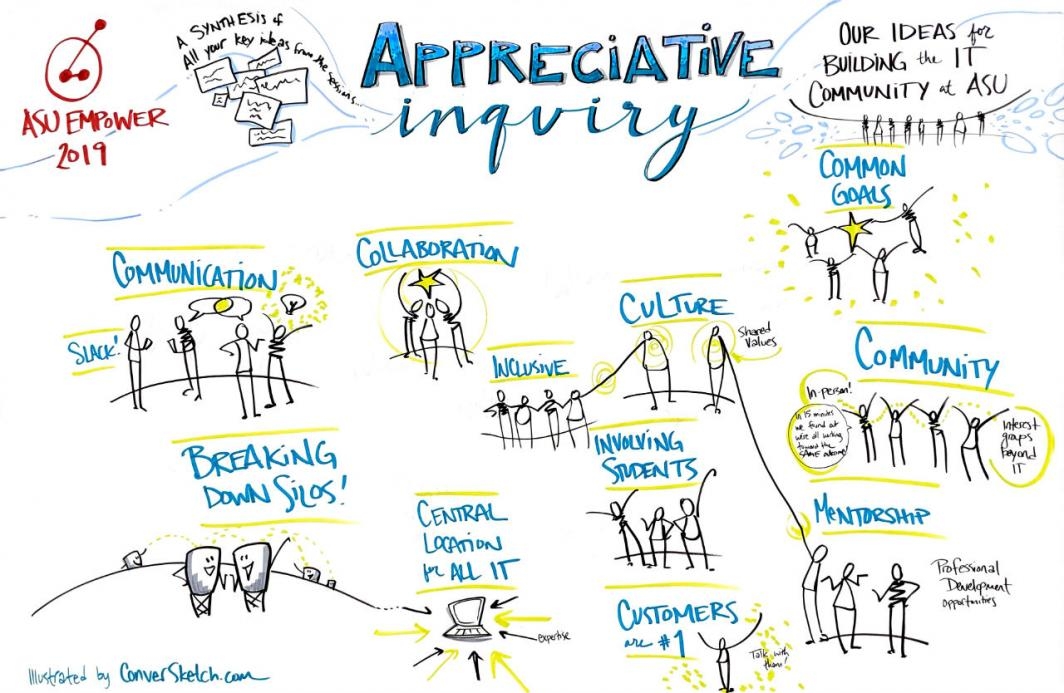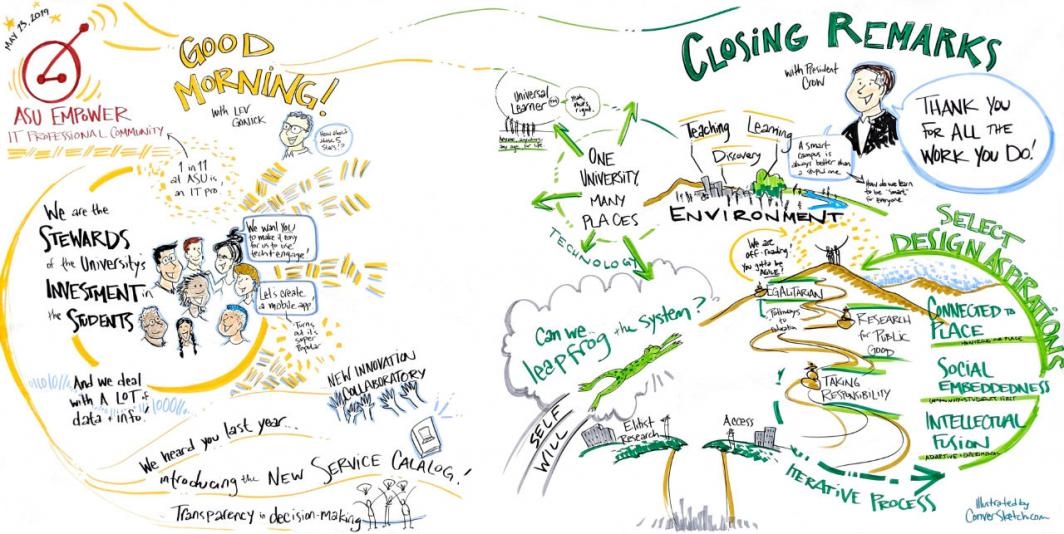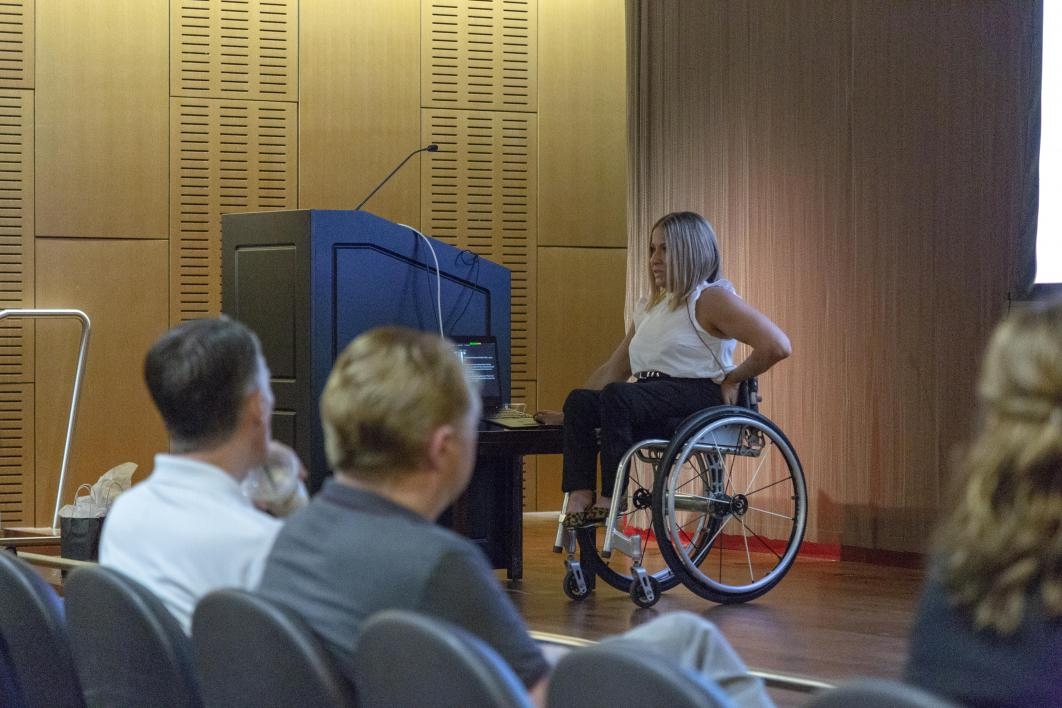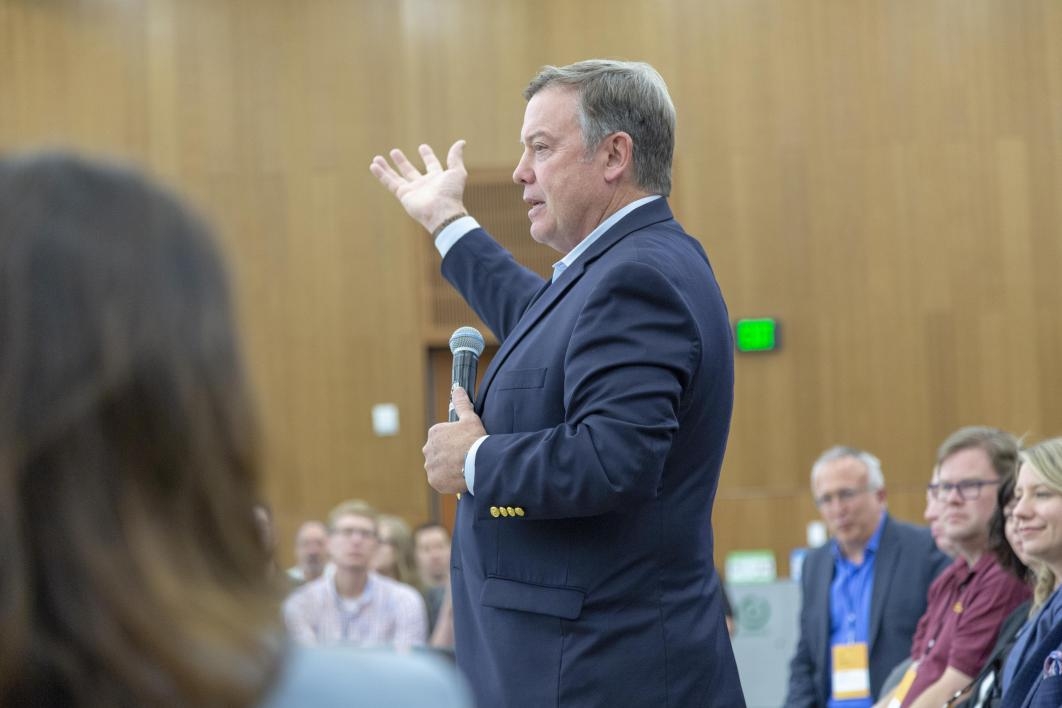Empower 2019 brings together ASU IT professionals to innovate for the future
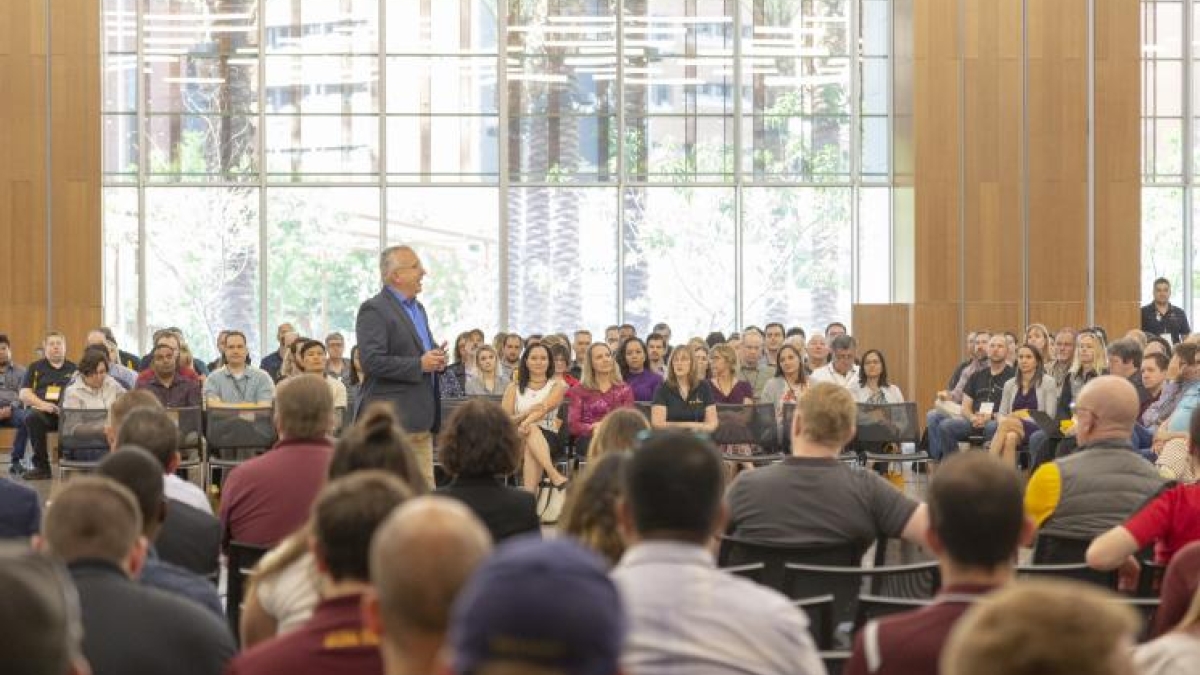
CIO Lev Gonick opened the day by outlining technology’s place in the ASU community.
On Thursday, May 23, Arizona State University's University Technology Office hosted Empower 2019, an ASU IT professional community retreat designed to discover new innovations and improve existing ones through peer-to-peer discussion.
Over 800 ASU IT professionals spent the day engaging with ASU Chief Information Officer Lev Gonick, one another and a wide array of speakers. ASU President Michael Crow capped the event as Empower’s keynote speaker, contextualizing the IT community’s contributions to the greater mission of the New American University.
Empower was created on the basis of ASU’s eight design aspirations. Experts from inside and outside ASU delved beyond IT, speaking on subject matters such as inclusion in the workplace, honoring place and space in indigenous areas and key performance indicators.
Groups also gathered for Appreciative Inquiry Interviews, a collaborative process that uses positive questions to build a more cohesive vision of the future and progress. Christine Whitney Sanchez, UTO’s chief culture officer, opened the space for participants to create their own parallel breakout sessions focused on the convening question: “Using the eight design aspirations as guidance, what are ASU’s IT issues and opportunities for enabling and catalyzing strategic innovation, community delight and operational excellence?”
After the breakout sessions, participants reconvened to surface the top ideas from the day. Graphic recorder Karina Branson captured many of the “aha moments” of these sessions and the whole event. (Her illustrations can be seen in the gallery below.)
At last year’s event, the top idea was a unified service catalog that holds requests IT professionals may receive from the ASU community. The service catalog was launched at Empower 2019.
This year’s top ideas identified by ASU IT community members include:
Big ideas from Empower 2019:
• Chatbots — These artificial intelligence-enabled "bots" have the potential to supplement instruction and advising as well as tailor content and information to meet individual student needs.
• Blockchain — Advancements in this emerging technology can be harnessed to advance a reinvented transcript so that all aspects of student learning are recorded, tracked, portable and owned by each individual learner.
• Shared culture of innovation — A large part of making collaboration easier for the entire ASU community is breaking down silos, making it much easier for groups that don’t always work in the same orbit to come together for exciting new projects.
• Next-generation communication — To that end, tools like Slack, a real-time messaging tool with open workspaces and extensive sharing capabilities, are crucial. Slack in the classroom (enhanced by Slackbots that can automatically respond to queries) and centralized Slack communication guidance are two of the specific facets of next-gen communication.
• Nontraditional classrooms — Attendees discussed the concept of an ASU college based on nontraditional classrooms. Untethering learning goes beyond educating online; it adds value with inclusivity and micro-credentials that rewards the learning of specific skills. This is a greater challenge than a purely technical one, but it is also indicative of the IT community’s place as “the stewards of the university’s investment in the students,” Gonick said.
• Smart infrastructure — The investment in a smart campus dovetails into a smart city and smart region, but as it applies to our ASU community, creating an ultimately interactive space and infrastructure is very important. VR campus tours, augmented reality signage, greater mobile app interactivity and more will increase student engagement and enhance their learning.
President Crow brought these focused conversations full circle when he closed out the day. He stressed that technology is a tool to fulfill the concept of a universal learner, bringing one university to many places in the process.
Select design aspirations — connected to place, social embeddedness and intellectual fusion — are important facets of the iterative process that maintains equality, research for the public good and taking responsibility, he added.
For more information, visit https://uto.asu.edu/empower/2019 and follow UTO on Twitter @ASU_UTO.
More Science and technology

ASU postdoctoral researcher leads initiative to support graduate student mental health
Olivia Davis had firsthand experience with anxiety and OCD before she entered grad school. Then, during the pandemic and as a…

ASU graduate student researching interplay between family dynamics, ADHD
The symptoms of attention deficit hyperactivity disorder (ADHD) — which include daydreaming, making careless mistakes or taking…

Will this antibiotic work? ASU scientists develop rapid bacterial tests
Bacteria multiply at an astonishing rate, sometimes doubling in number in under four minutes. Imagine a doctor faced with a…
